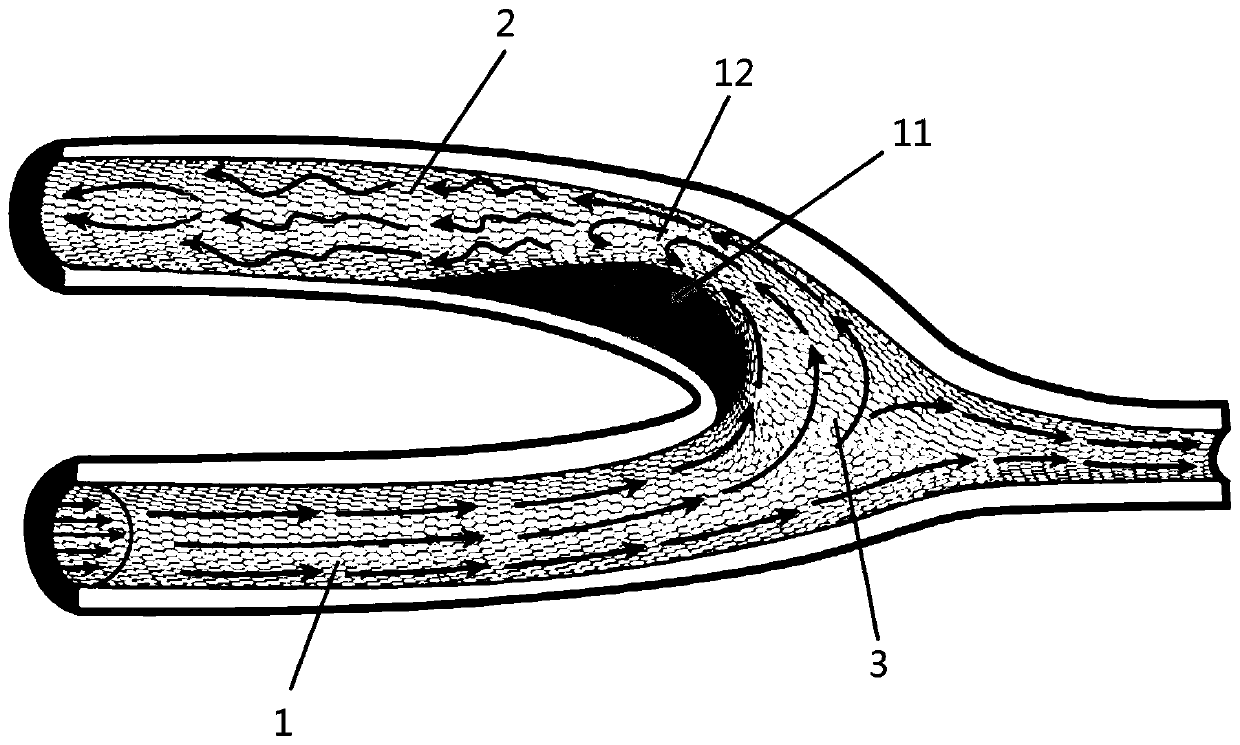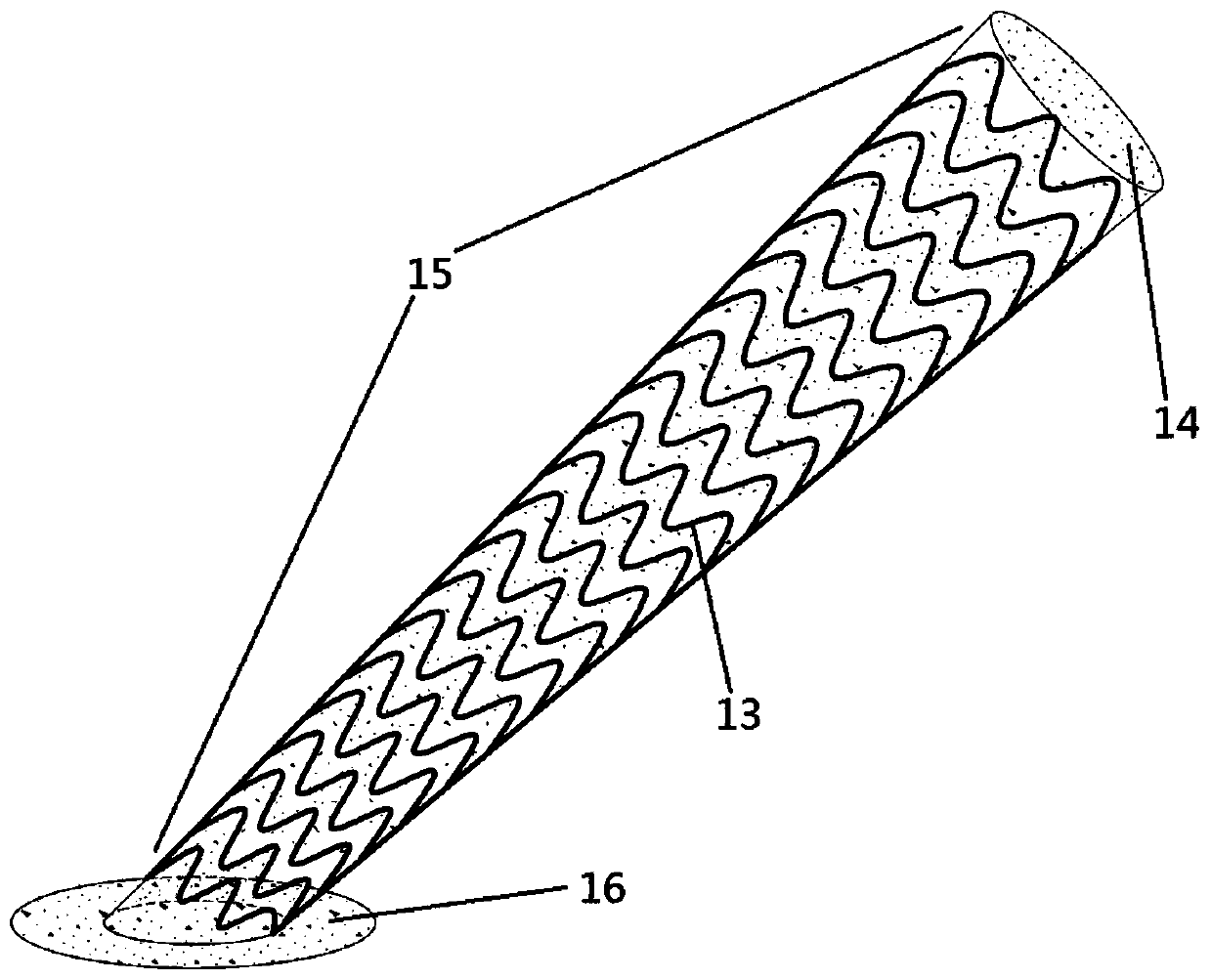Medical intravascular implantation device
A technology for implanting devices and blood vessels, applied in medical science, stents, surgery, etc., can solve problems such as anastomotic stenosis of internal fistulas, and achieve the effects of preventing anastomotic stenosis of internal fistulas, preventing vascular cavity stenosis, and improving compliance.
- Summary
- Abstract
- Description
- Claims
- Application Information
AI Technical Summary
Problems solved by technology
Method used
Image
Examples
Embodiment
[0026] When performing internal fistula surgery, a 3 cm long longitudinal incision was made on the wrist of the patient after local infiltration anesthesia, the subcutaneous tissue and fascia were separated, and the radial artery 1 and cephalic vein 2 were freed. Block the blood flow at the proximal end 10 of the vein with a blood vessel clamp, ligate the distal end 5 of the vein with silk thread, cut off the cephalic vein 2 at the proximal end of the ligation point, and rinse the lumen of the stumped end of the cephalic vein 2 with heparin saline. The dissociated radial artery 1 is clamped with two vascular clips respectively at the proximal end 9 of the artery and at the distal end 4 of the artery to block the blood flow. A section of artery was reserved between the two vascular clips, and a 6mm long longitudinal incision was made on the side wall of this section of artery, and the lumen of the artery was flushed with heparin saline. Next, the device is implanted, and the pi...
PUM
 Login to View More
Login to View More Abstract
Description
Claims
Application Information
 Login to View More
Login to View More - R&D
- Intellectual Property
- Life Sciences
- Materials
- Tech Scout
- Unparalleled Data Quality
- Higher Quality Content
- 60% Fewer Hallucinations
Browse by: Latest US Patents, China's latest patents, Technical Efficacy Thesaurus, Application Domain, Technology Topic, Popular Technical Reports.
© 2025 PatSnap. All rights reserved.Legal|Privacy policy|Modern Slavery Act Transparency Statement|Sitemap|About US| Contact US: help@patsnap.com



